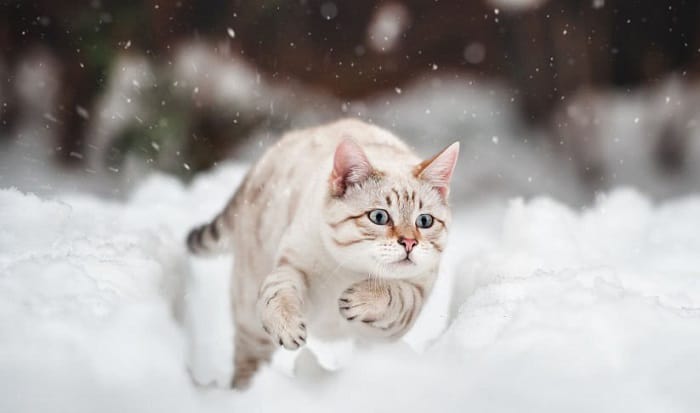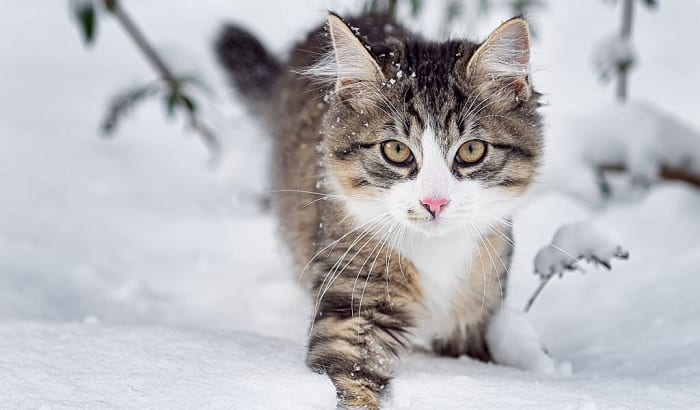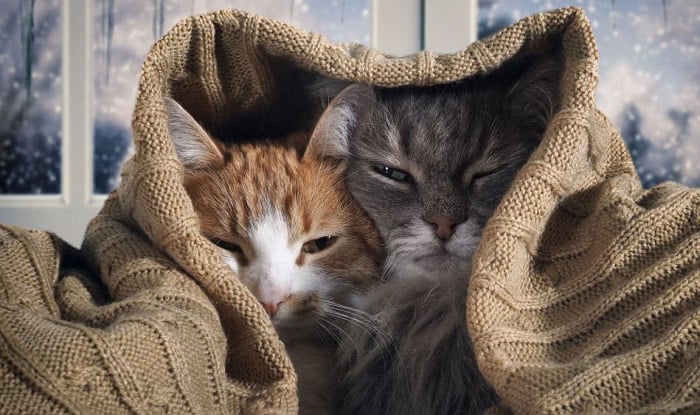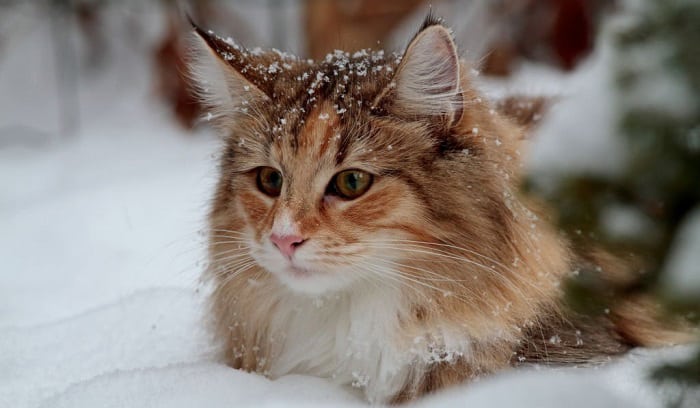Whether indoor or outdoor cats, when the temperature drops too low, it is alarming. Even the feisty, most adaptable, and generally less needy domestic pet like a cat needs help to survive such weather conditions.
So, how do we know how cold is too cold for cats? There is a limit on the body temperature a cat can tolerate. Below 45°F is a dangerous condition of freezing temperatures to put a cat through.
Though they may seem to be doing well outdoors, extreme cold temperatures can harm them, especially sick cats and short-haired ones, and sometimes can be fatal.
Cats don’t mind being outside. They weren’t bothered with being a little uncomfortable. But as a cat owner, you should be aware of when the temperature drops to notice how cold can cats tolare. Even outdoor felines and cats living in cold climates cannot stand the below 32°F range.
They could develop hypothermia, which will make them shiver, lethargic, weaken their muscles, and have wintry skin.
Table of Contents
What Temp is Too Cold for Cats?
An average cat’s body temperature is approximately 100 °F. It’s like the body heat of a child with a low-grade fever.
So, is 60 degrees too cold for an indoor cat? The answer is no! It’s actually what cats like!
A house with an ambient temperature generally has a range of safe temperature for cats indoors of 60 to 70 °F. They can be seen relaxing and just boozing off to sleep.
For domesticated indoor cats, 45 degrees is already beyond tolerable temperature. Also, 32 degrees is too cold for cats to be safe.
How Can I Keep My Cat Warm in Winter?
Having an adequate temperature makes a cat healthy during long periods of coldness. With the following suggestions, you can help your furry feline friend stay warm during the winter season.
1. For outdoor cats
- Ensure a warm and safe place
Make sure to provide a place for feral cats when coldness reaches extreme temperatures (below 40 Degrees fahrenheit). Because based on how cold can cats handle, prolonged exposure without shelter is dangerous. Make sure to add a warm blanket in a cardboard box for them.
- Provide them a lot of food and water
Cats seek shelter in the wind chill also to find food. You can put food on plastic dishes and bowls rather than metal. Also, dry food is better than wet food as it will not go cold.
Make sure to keep water in a warm place and use a heated bowl if you can. Or use some heated pads to make it warm longer because cats in cold weather tend to get dehydrated.
2. For cats inside
- Prepare warm blankets or a heated cat bed during this cold climate to spots they like in the house.
- Turn up the thermostat of your house to prevent temperatures drop, especially if you have a senior cat who gets cold easier and cats with short hair as well.
Below are cats at risk of coldness because they get cold easily and can get cats hypothermia:
- Cast with hyperthyroidism
- Cats with renal disease
- Cats with a heart disease
- Cats with cancer
These cats should not be allowed to stay outdoors, especially during winters. They need extra care because they are susceptible to further sickness.
What Can Happen to Cats in the Cold?
1. Signs your cat is cold and in the hypothermia stage
- Low blood pressure
- Laying in a tight ball position
- Shivering excessively
- Pupils are dilated
- Having trouble breathing (shallow breathing)
- Muscles are stiff
- Mental Confusion
- Low Heart rate
- Comatose (the severe stage)
When the temperature dips below the cat’s tolerable range, your cat can suffer from mild hypothermia to severe hypothermia.
2. Signs your cat is having frostbites
- Swelling
- Skin blisters
- Blackened skin
- Brittle skin
Frostbite is the constriction of the blood vessel to exposed skin, but you will notice it on ears, tails, and paws. They are all alarming warning signs of frostbites. So If you notice some of them in your cat, please contact the nearest veterinarian.
Factors That Can Affect a Cat’s Tolerance to Frigidness
- Body mass and size- The temperature can a cat tolerate will depend on its fat. Smaller bodies and lighter weights mean fewer fats that can provide them with insulation.
- Age- Cats that are too old (seniors) with health problems and too young (kittens) cannot regulate their body temperature, unlike healthy cats.
- Environment- Outdoor cats can tolerate the cold temperature better as they have already gotten used to it.
- Type of coats- A cat’s coat can help them handle winter weather. Therefore, hairless cats need more protection in the cold winter months. Meanwhile, cats with black thick coats can survive better in the wild even when the temperature drops lower than 45 degrees Dahrenheit.
Conclusion
Cats enjoying the outdoors doesn’t mean they are totally fine to be left outside in the cold temperature for too long. You should be able to know by now how cold is too cold for cats.
Initiating to learn these things says a lot about how much you love and care for your feline family member. And as we always say, seek professional medical help when you’re in doubt about your cat’s condition to prevent the unimaginable scenario. Learn how cold can cats handle to keep them safe!

I am Amy Sawy, a Doctor of Veterinary Medicine (DVM) graduate from the University of Kansas. y husband, Dr. Plummer, and I own a veterinary clinic in Phillipsburg, Kansas. In addition to my professional background, I am a devoted pet owner myself, with a household that includes dogs, rodents, and most notably, cats – a total of five felines in my home.
In 2020, I joined an organization as a professional writer, leveraging my experience and collaborating with my team to deliver the most valuable information for your cat’s care.













